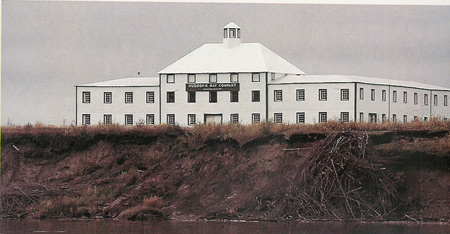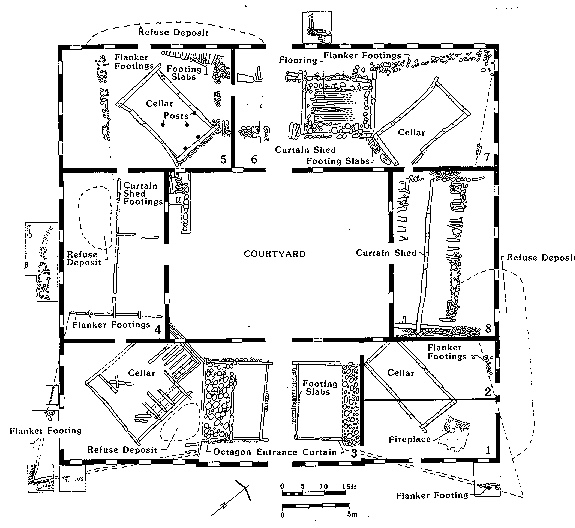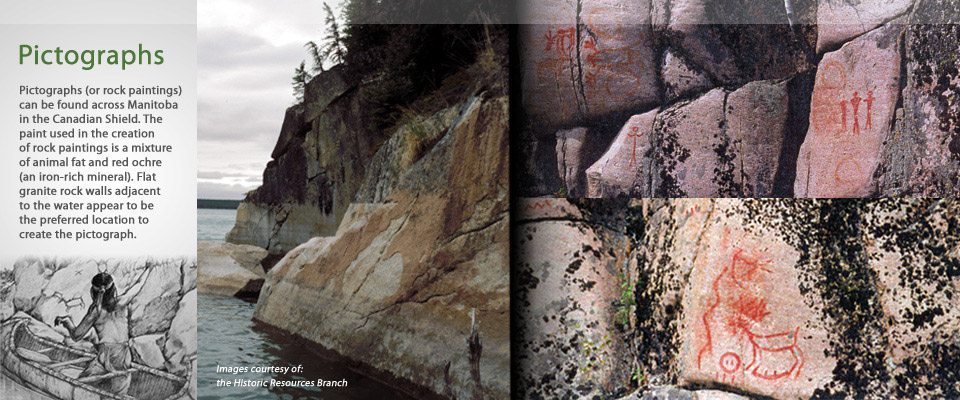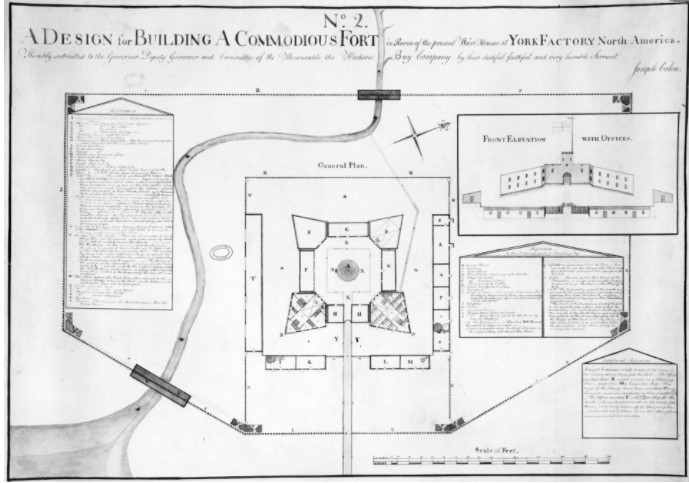York Factory Octagon
The “Octagon” (1788 - 1831), York Factory National Historic Site
|
Site History and Description York Factory National Historic Site is located on the southwestern shore of Hudson’s Bay at the mouth of the Hayes River. York Factory, so-called due to the live-in presence of the “factor” (aka regional man-in-charge), was originally built in 1684, making it one of the first fur-trading posts established by the Hudson’s Bay Company (HBC). From the 17th through late 19th century, York Factory was the central base of operations for the HBC’s control of the fur trade and other business dealings with the First Nations throughout Rupert's Land. The Factory was laid out in the form of a letter H with the guesthouse, depot (eventual location of the Octagon), and summer mess house in the line forming the cross bar. The legs of the H were composed of four fur stores; the arms contained the trading shop, provision store, clerks’ house, and the house of the officer in charge. Various other buildings, such as a boat shed, oil store, lumber house, ice house, powder magazine, cooper’s shop, and smithy, were also scattered in the area. A large, vibrant community known as Kihci-wâskâhikan (“Great House”) in the Cree language eventually populated the area. |
|
 Comparison of York Factory in 1923 and 2005. Source: https://www.parkscanada.gc.ca/en/lhn-nhs/mb/yorkfactory/info/gestion-management. Comparison of York Factory in 1923 and 2005. Source: https://www.parkscanada.gc.ca/en/lhn-nhs/mb/yorkfactory/info/gestion-management. |
|
Due to the War of the Spanish Succession, the site and its associated structures changed ownership a variety of times and suffered major damage over the years. Rebuilding efforts were undertaken between 1778 and 1795; however, the fort’s foundations were built of rigid stone and brick with solid wood and brick walls. This type of building works well in the British climate, but it is not flexible enough for the heaving and pressure of the Canadian permafrost. By 1819, Arctic explorer and Royal Navy Captain John Franklin reported that the fort was fairly complete and describes it as having an octagonal court in the centre, surrounded by buildings that were two storeys high and placed in the form of a square. The Octagon was a star-shaped fort with four five-sided structures called flankers at each corner. Between each of these were rectangular rooms called curtain sheds. These forts could be defended by shooting from the flankers, along the outside walls of the curtain sheds. By 1831, the Octagon had to be replaced; it was completely razed and replaced with the wooden Depot that currently sits on the site. This Depot is the oldest and largest wooden building in Canada standing on permafrost. In 1957, the HBC closed York Factory down after a long decline due to the advent of the railway and other overland trading routes. Residents were relocated to York Landing Cree Nation, Split Lake, and Shamattawa. The site has been owned by the Canadian government since 1968 and is now operated by Parks Canada. |
|
|
Plan for a “Commodious Fort” (i.e., the Octagon) by Joseph Colen, HBC resident officer in 1786. Source: https://www.hbcheritage.ca/places/forts-posts/york-factory |
The Depot as it stands today. Source: Empire of the Bay: An Illustrated History of the Hudson’s Bay Company, Peter C. Newman, 1989. |
|
Archaeological History The long-term conservation and management strategy for the Depot at York Factory developed by Parks Canada includes structural stabilization and repairs. Archaeological excavations began in 1991 to record the building remains of the Octagon buried in the permafrost and to rescue artifacts that would be damaged by these planned building repairs. During the 1991 excavations, Parks Canada archaeologists working between the floor joists inside the Depot found well preserved remains of the Octagon. In 1992, more Octagon remains were found in insulation and drainage trenches excavated outside the Depot. These Octagon remains include cellars under all four flankers, footing remnants of the officers' and men's flankers, a fireplace or chimney foundation, curtain shed foundations, footings and a possible oven from the 1810 cookroom, and a thick refuse deposit encircling the perimeter of the Octagon. Beyond the Octagon/Depot, archaeological excavations have since unearthed more than 150 buildings, structures, and features including the Library, Powder Magazine, the Ice House, palisades, boardwalks, and drains. The fences and markers of more than 160 graves in the cemetery, and some 300,000 artifacts that represent many aspects of the fur trade between 1788 and 1957 have also been recovered. The bulk of these artifacts are properly cared for at a Parks Canada facility in Winnipeg, while some 8000 artifacts are on public display in the Depot Building. The York Factory Reference Collection (>5000 artifacts) is a special collection housed in Winnipeg for research use and display. |
|
 Archaeological remains of the Octagon. Source: https://www.pc.gc.ca/en/lhn-nhs/mb/yorkfactory/decouvrir-discover/archaeo Archaeological remains of the Octagon. Source: https://www.pc.gc.ca/en/lhn-nhs/mb/yorkfactory/decouvrir-discover/archaeo |
|
Sources
Hudson’s Bay Company History Foundation
2016 York Factory. Accessed online 11 August 2021. https://www.hbcheritage.ca/places/forts-posts/york-factory
Parks Canada
2007 York Factory National Historic Site of Canada Management Plan. Accessed online 11 August 2021. https://www.parkscanada.gc.ca/en/lhn-nhs/mb/yorkfactory/info/gestion- management
2017 York Factory National Historic Site The secret of the York Factory Depot. Accessed online 11 August 2021. https://www.pc.gc.ca/en/lhn-nhs/mb/yorkfactory/decouvrir-discover/archaeo
Wikipedia
2021 York Factory. Accessed online 11 August 2021. https://en.wikipedia.org/wiki/York_Factory





